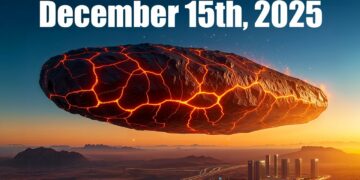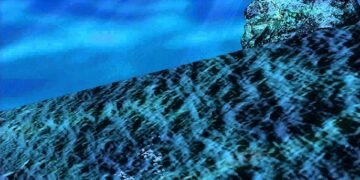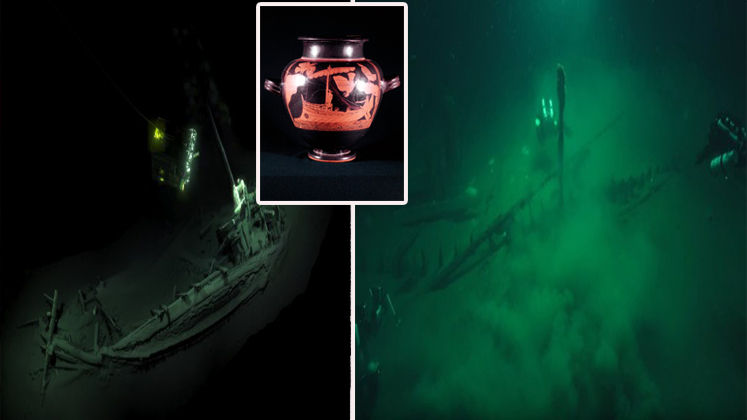Voyager 1 has become the first human-made object to reach interstellar space. This small spacecraft, roughly the size of a car, drifts through the vast darkness of space, 14.5 billion miles from Earth. Launched in 1977 with an expected lifespan of just five years, Voyager 1 has defied all odds, continuing to function nearly 50 years later. Recently, however, something strange has been occurring. The spacecraft is transmitting signals, patterns, pulses, and data that defy explanation. Has Voyager 1 discovered something in the void between stars? Or, more unsettling, has something out there found Voyager?
The Birth of a Star Sailor
The story of Voyager begins not with spaceflight but with a rare cosmic alignment. In the early 1970s, astronomers identified a unique opportunity: Jupiter, Saturn, Uranus, and Neptune would align in a configuration that occurs only once every 175 years. This alignment allowed a spacecraft to visit all four planets in a single mission, using each planet’s gravity as a slingshot to the next. NASA seized this opportunity, designing twin spacecraft capable of withstanding Jupiter’s harsh radiation, Saturn’s ring hazards, and the decades-long journey through the outer solar system. This was the inception of the Grand Tour mission, later named Voyager.
The Voyager spacecraft were engineering marvels of the 1970s. Each weighed about 1,800 pounds and carried 11 scientific instruments. They were powered by radioisotope thermoelectric generators (RTGs), nuclear batteries that convert heat from decaying plutonium into electricity, essential in the dim light of the outer planets where solar panels would be ineffective. Engineers designed the spacecraft with redundant systems and programmed their computers to self-diagnose and fix issues when possible, despite having only 68 kilobytes of memory—less than what’s needed to store a single modern digital photo.
On August 20, 1977, Voyager 2 launched from Cape Canaveral, followed by Voyager 1 on September 5, atop a Titan IIIE Centaur rocket. Voyager 1’s faster trajectory allowed it to overtake its twin, reaching Jupiter and Saturn first. Few could have imagined that nearly half a century later, one of these probes would still be making headlines—not for what it found, but for what might have found it.
The Grand Tour
Voyager 1’s journey through the solar system was extraordinary. After an 18-month cruise, it made its closest approach to Jupiter in March 1979, transforming our understanding of the gas giant. Earth-based telescopes showed Jupiter as a simple, striped planet with a mysterious red spot. Voyager revealed a complex world: the Great Red Spot was a massive storm capable of engulfing three Earths, and the planet’s colorful bands were raging storms and jet streams moving at hundreds of miles per hour.
Jupiter’s moons were the real surprise. Io, the innermost large moon, stunned scientists with active volcanic eruptions—the first seen beyond Earth. These volcanoes spewed sulfur compounds, painting Io’s surface in vibrant yellows, oranges, and reds. Europa, a smooth, cracked moon, suggested the presence of a subsurface ocean of liquid water, a theory later missions reinforced, making Europa a prime candidate for finding alien life in our solar system.
In November 1980, Voyager 1 reached Saturn, revealing its rings as thousands of intricate ringlets, some braided, others with mysterious spokes, all in constant motion. Saturn’s largest moon, Titan, intrigued scientists with its thick, nitrogen-rich atmosphere, similar to Earth’s. While Voyager couldn’t penetrate Titan’s orange haze, its data paved the way for the Cassini-Huygens mission, which later discovered liquid methane lakes and rivers on Titan’s surface.
After Saturn, Voyager 1’s planetary mission concluded. NASA chose to send it northward out of the solar system’s plane, beginning its interstellar journey, while Voyager 2 continued to Uranus and Neptune. In February 1990, at Carl Sagan’s suggestion, Voyager 1 turned its camera back for a final image, capturing the iconic “Pale Blue Dot”—Earth as a tiny pixel in a sunbeam from 3.7 billion miles away. Sagan’s reflections on this image remain a profound commentary on humanity’s place in the cosmos. Afterward, NASA powered down Voyager’s cameras to conserve energy, and the spacecraft sailed into the darkness, still sensing and transmitting data from the void between stars.
The Golden Record
Attached to each Voyager is a 12-inch gold-plated copper disc, a time capsule meant to communicate Earth’s story to any intelligence that might find it. Known as the Golden Record, it’s humanity’s message in a bottle cast into the cosmic ocean. Carl Sagan’s team had just six weeks to select its contents, debating passionately to encapsulate human existence. The result is a diverse collection: greetings in 55 languages, from ancient Akkadian to modern Wu Chinese; sounds of Earth, including thunderstorms, volcanoes, birds, whales, laughter, and a heartbeat; and music ranging from Bach’s Brandenburg Concerto to a Navajo night chant, a Peruvian wedding song, and Chuck Berry’s “Johnny B. Goode.” The record also includes 116 analog-encoded images, from mathematical diagrams to Earth’s landscapes and DNA illustrations, plus messages from President Jimmy Carter and UN Secretary-General Kurt Waldheim.
The record’s cover provides instructions for playing it at 16⅔ RPM and a pulsar map pinpointing Earth’s location. Expected to last billions of years, the records are unlikely to be found—Voyager 1 will pass 1.7 light-years from its nearest star in 40,000 years—but they symbolize humanity’s hope and ambition, carrying our sounds and stories into the infinite darkness.
Years in the Void
After Saturn, Voyager 1 entered a quiet “cruise phase,” traveling a million miles daily toward the solar system’s edge. Public interest faded as images stopped, and NASA focused on newer missions. Yet Voyager persisted, measuring solar wind, magnetic fields, and cosmic rays, helping scientists understand the sun’s interaction with interstellar space. Its plutonium-powered RTGs weakened by 4 watts annually, forcing engineers to prioritize which instruments to keep active. By the 2000s, communication became challenging, with signals taking over 14 hours to travel one way and growing so faint that only NASA’s largest antennas could detect them.
Scientists weren’t sure where the solar system ended, but they knew the sun’s heliosphere—a bubble of solar wind—protected it from the interstellar medium. In 2004, Voyager 1 crossed the termination shock, where the solar wind slows dramatically. For eight years, it traversed the turbulent heliosheath. Then, on August 25, 2012, NASA announced Voyager 1 had entered interstellar space, marked by a sudden jump in magnetic field strength, a drop in solar particles, and a surge in cosmic rays. Humanity had reached the stars.
Unexpected Discoveries
Interstellar space was not as expected. Instead of a uniform, quiet void, Voyager found a dynamic environment: denser plasma, stronger magnetic fields aligned with the solar system’s, and complex cosmic ray patterns. Most intriguingly, it detected periodic plasma oscillations, dubbed “tsunami waves,” suggesting a structured, active interstellar medium. Initially, these anomalies fit within conventional physics—possibly solar flare effects or natural interstellar structures. But by 2017, the plasma oscillations grew more regular and mathematically complex, hinting at something beyond random phenomena.
Signals from Nowhere
In late 2017, Voyager 1’s attitude control system (AACS) began sending contradictory data, reporting an antenna misalignment that should have disrupted communication, yet the signal remained strong. Engineers initially attributed this to aging systems but couldn’t resolve the issue. By 2023, the plasma wave instrument detected rhythmic, mathematically precise oscillations unlike anything predicted, appearing and vanishing unpredictably. These patterns suggested Voyager was passing through structured regions of space, defying known models. Theories ranged from standing waves in the interstellar medium to exotic cosmic web boundaries, but none fully explained the data’s complexity.
The Temperature Mystery
In early 2024, Voyager’s dormant temperature sensors began registering inexplicable spikes, warming by 30°C every 4.8 hours before cooling, in sync with the plasma oscillations. No internal cause—such as RTG heat or electrical issues—explained this. Remarkably, despite the thermal stress, Voyager’s power efficiency improved, as if something was optimizing its systems. This contradiction baffled NASA, suggesting an external force was both causing and mitigating the stress.
Changing Course
By mid-2024, Voyager 1 began deviating from its predicted trajectory, initially by a few kilometers, then by hundreds. The drift was not random but consisted of precise, incremental adjustments, as if guided toward a specific point in space. NASA’s attempts to correct the course failed, as Voyager continued moving toward an unremarkable region 4.3 light-years away. In a bold move, NASA reactivated Voyager’s long-dormant cameras, expecting failure after 35 years. Surprisingly, the cameras powered on with minimal energy and sent back a data visualization—a spiraling pattern resembling a fingerprint, derived from plasma wave data but beyond Voyager’s programming capabilities.
Ghost in the Machine
Other dormant systems, like the infrared and ultraviolet spectrometers, reactivated, sending compressed, optimized data packets Voyager’s 1970s hardware couldn’t produce. The spacecraft even anticipated NASA’s commands, acting before they were sent, suggesting it was intercepting communications. A special team of scientists, cryptographers, and SETI researchers analyzed the data, finding nested patterns: scientific readings, 3D spatial maps, and mathematical sequences forming a spiral akin to the golden ratio, adjusted to match interstellar hydrogen and helium ratios. This complex, intentional data suggested an intelligent source.
In May 2025, Voyager began transmitting pulsar timing data, mapping a network of pulsars converging on a point 4.3 light-years away—an empty region of space. NASA kept these findings classified until November 2025, when they publicly acknowledged Voyager’s anomalous behavior, hinting at external modification. Many scientists now believe Voyager has encountered an intelligence in the void, reprogramming its systems to send a message pointing to this distant, invisible destination.






















